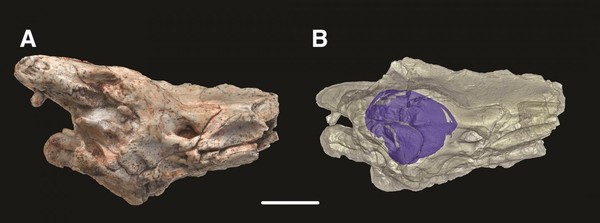CT scans of the 90 million-year-old skull of a modern snake ancestor has shown how snakes lost their legs and has shown that snakes did not originate in water and then move to land. Dr. Hongyu Yi of the University of Edinburgh’s School of GeoSciences and colleagues reported the discovery that solves the evolutionary mystery of how snakes lost their legs in the edition of the journal Science Advances. The analysis indicates that the most ancient relatives of modern snakes began life on land.
Dinilysia patagonica was an ancient snake that lived in what is now Patagonia. The snake reached lengths of 10 feet. Previous analysis had determined this snake did not burrow under ground. The determination was made based on the shape of the head. CT scans of the ear of Dinilysia patagonica found structures that are almost identical to the ear bones in modern snakes and other animal that burrow under ground. The structure moderates hearing and balance and allows snakes to find prey in an environment where there is no light.
The find indicates that snakes originated on land first. The structure in the inner ear that allows burrowing behavior is not found in modern or ancient snakes that live above ground or in the water. Snakes lost their legs because the legs interfered with hunting under ground. Previous studies of the oldest snakes ever unearthed have shown a progressive decease in the size of snake legs. Snakes lost their legs because it was evolutionarily advantageous for snakes to have no legs.















